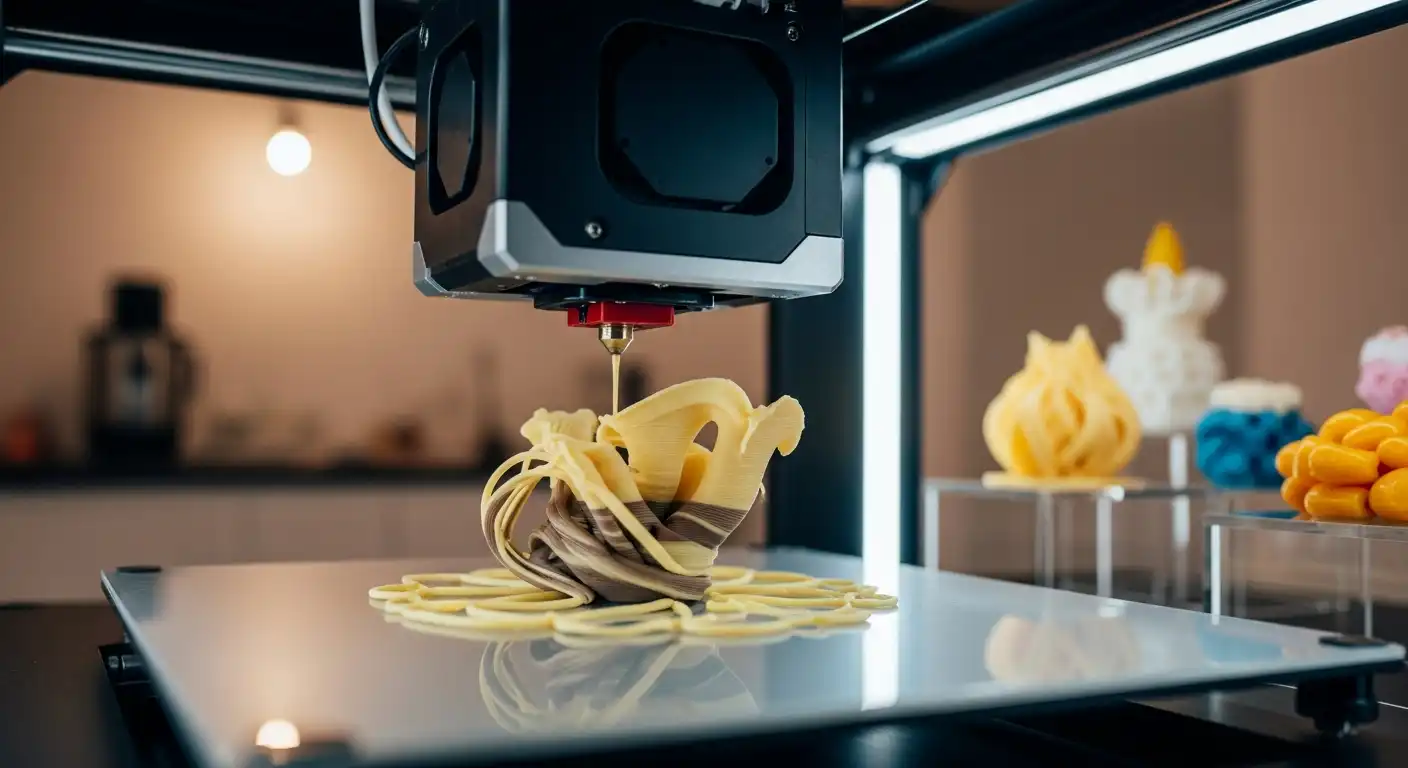Key Points:
- 3D-printed food combines technology with gastronomy to produce intricate, customized culinary products.
- It offers the potential for personalized nutrition, catering to individual dietary preferences and nutritional needs.
- 3D-printed food offers sustainability benefits, including the use of alternative ingredients, resource optimization, and minimal food waste.
- The technology is gaining traction in culinary and scientific circles, with ongoing advancements driving its evolution.
In a culinary revolution combining technology with gastronomy, 3D-printed food is emerging as a groundbreaking innovation poised to transform our eating. By creating intricate, customized food items layer by layer, 3D printing technology pushes the boundaries of culinary creativity. It offers new possibilities for personalized nutrition and sustainable food production.
3D-printed food involves using specialized 3D printers with food-grade materials to fabricate edible creations according to digital designs. These printers extrude food ingredients, such as purees, doughs, or pastes, in precise patterns and shapes, creating unique culinary masterpieces with unparalleled precision and complexity.
One of the most compelling aspects of 3D-printed food is its potential to cater to individual dietary preferences and nutritional needs. By precisely controlling the composition and texture of the printed food, chefs and food technologists can tailor meals to accommodate specific dietary restrictions, allergies, or health goals. This level of customization opens up exciting possibilities for personalized nutrition and could revolutionize how we approach dietary management and food consumption.
Moreover, 3D-printed food has the potential to address pressing sustainability challenges in the food industry. By utilizing alternative ingredients, optimizing resource utilization, and minimizing food waste, 3D printing technology offers a more sustainable approach to food production. Creating intricate designs and structures with minimal material use can also contribute to the development of eco-friendly and visually appealing food products.
In recent years, 3D-printed food has gained traction in both culinary and scientific circles, with chefs, researchers, and food companies exploring its potential applications. From intricate dessert decorations to functional food items tailored to specific nutritional needs, the possibilities for 3D-printed food are virtually limitless.
While 3D-printed food remains in its early stages of development, ongoing advances in technology and materials are driving its evolution and adoption. As technology becomes more accessible and cost-effective, we can expect to see an expansion of its use in various culinary settings, including restaurants, catering services, and home kitchens.
As we look to the future, 3D-printed food holds the potential to revolutionize the way we eat. It offers a compelling blend of innovation, creativity, and sustainability that has the potential to reshape the culinary landscape.





